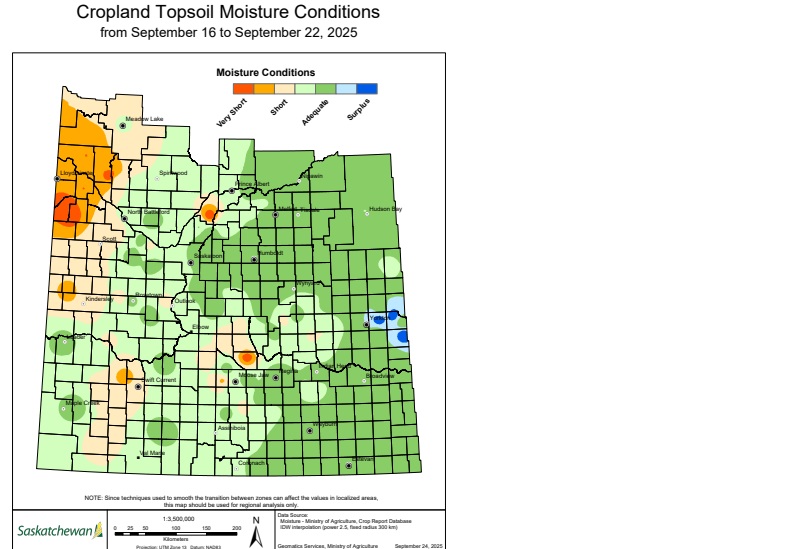The Saskatchewan harvest is now more than two-thirds complete, even as rain and high humidity stalled progress in the eastern portion of the province and caused delays in the west.
Thursday’s weekly crop report pegged the overall harvest in the province at 68% complete as of Monday. That’s up from 53% a week earlier but continues to trail the five- and 10-year averages of 83% and 72%. Last year at this time, the harvest was 79% done.
As a result of the rainy and damp conditions, areas with cereal crops still in the field are seeing poor quality and sprouting, the report said. However, higher temperatures over the weekend and into the coming week should help farmers progress or finish up this year’s harvest, it added.
The southwest leads the province with 80% of crops now in the bin, followed by the southeast at 70%. The west-central region is 65% complete, while the east-central sits at 59%. The northeast is at 61% done, and the northwest at 69%.
By crop type, winter wheat and fall rye harvests are finished. Field peas are nearly complete at 99% and lentils at 96%. Spring wheat is 73% combined, durum 78%, oats 70% and barley 86%. Canola harvest made significant strides this week, with 42% now combined. Flax, soybeans and mustard sit at 18%, 23% and 62% complete, respectively.
Rainfall was light across most of the province, with the Rhein area east of Yorkton recording the most at 44 millimetres. Other notable amounts included 20 mm in both Carnduff and Blaine Lake. Limited precipitation caused a decline in topsoil moisture. Cropland topsoil moisture was rated 59% adequate, 32% short, and 7% very short as of Monday, compared to 66% adequate, 22% short, 6% very short, and 6% surplus a week earlier. As can be seen on the map below, much of the eastern half of the province is in much better shape in terms of soil moisture versus the western half.
Crop damage this week was primarily attributed to wind and dry conditions, though low-lying fields lost some acres to excess water. Damage from migrating waterfowl, including geese and cranes, was also reported.
